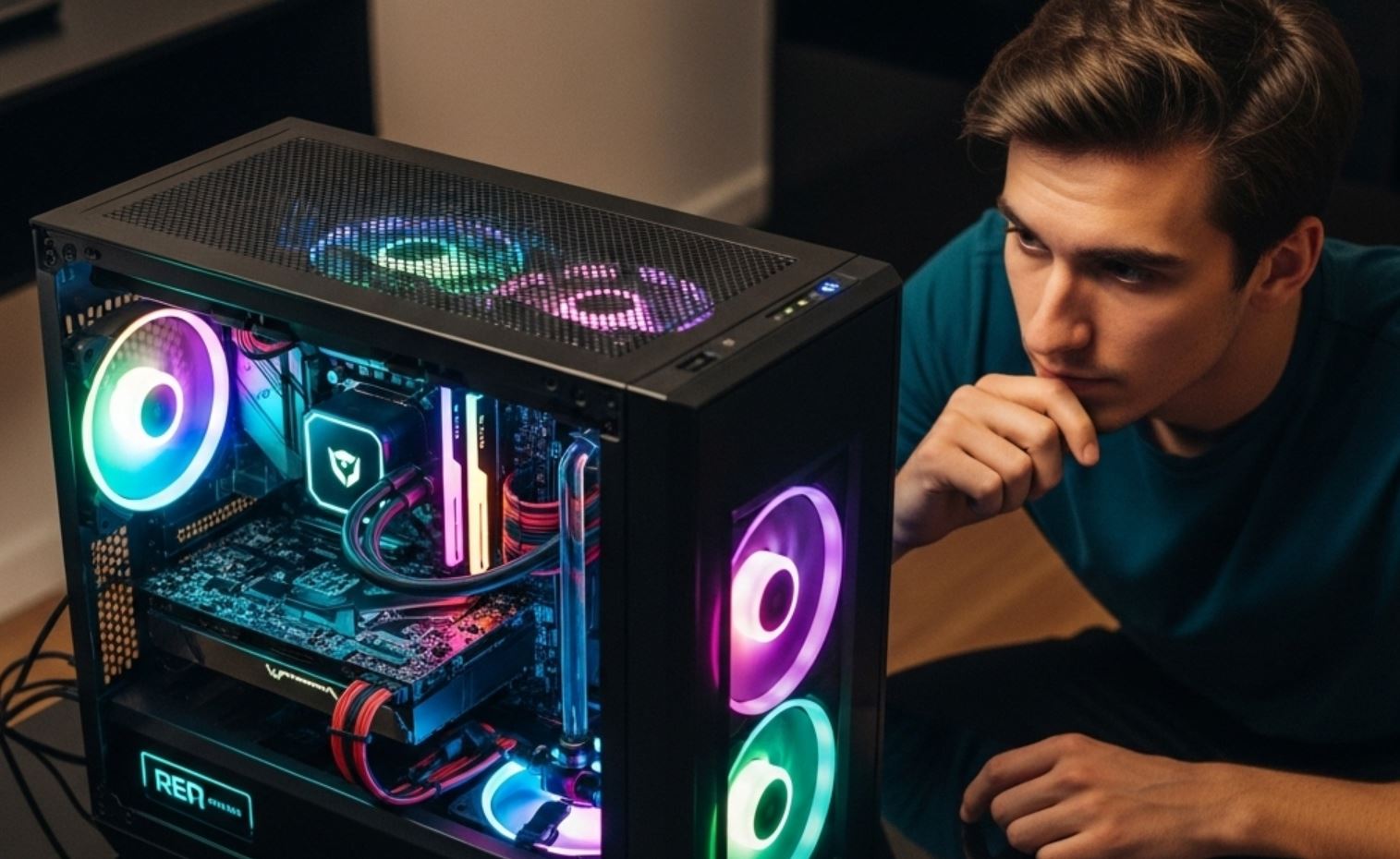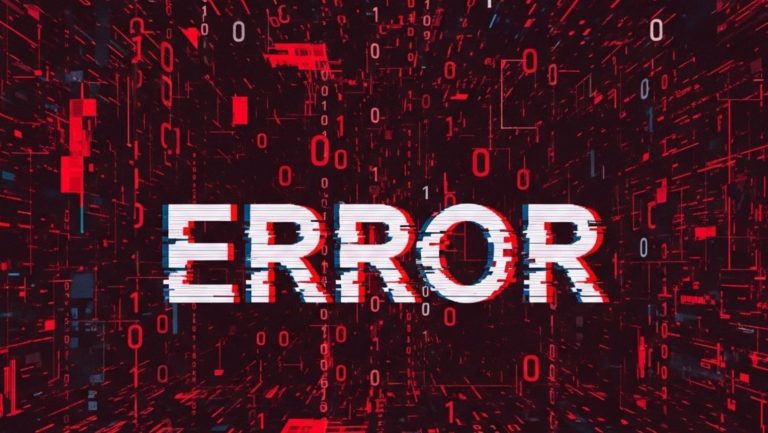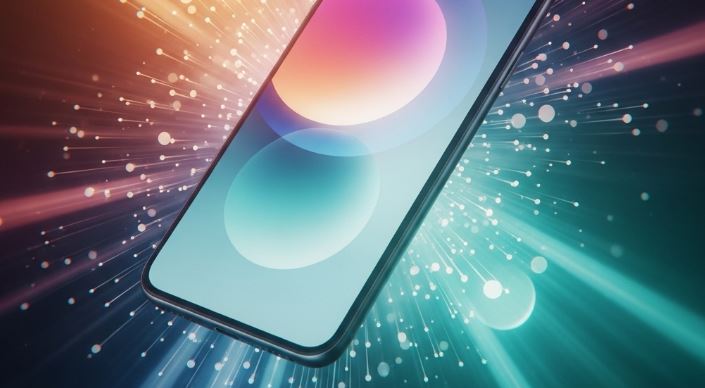
That moment when you press the power button on your computer, expecting the familiar whir and the glow of your operating system, can quickly turn into a moment of concern if, instead, you’re greeted by a series of insistent beeps. Among the various beep patterns, three distinct beeps are a common S.O.S. signal from your system’s hardware. While the specifics can vary slightly between different BIOS (Basic Input/Output System) manufacturers, a three-beep code often points towards a very particular area of your computer’s hardware.
The Prelude to Boot: Understanding POST and Beep Codes 📢
Before your operating system (like Windows, macOS, or Linux) even begins to load, your computer performs a crucial initial check called the Power-On Self-Test (POST). This diagnostic sequence is initiated by the BIOS or UEFI (Unified Extensible Firmware Interface) firmware, which is stored on a chip on your computer’s motherboard. The POST’s job is to verify that all essential hardware components required for a successful boot-up are present and functioning correctly.
These components include:
- The Central Processing Unit (CPU)
- The Random Access Memory (RAM)
- The graphics card (or integrated graphics)
- Storage devices (hard drives, SSDs)
- Keyboard and mouse (to a lesser extent for initial boot)
If the POST encounters a critical error with one of these components, it often cannot initialize the video display to show an error message on your screen. This is where beep codes come into play. They are audible signals designed to communicate the nature of the problem when visual output isn’t available. Think of them as a rudimentary language your motherboard uses to tell you what’s wrong. The number and pattern (long or short) of the beeps correspond to specific error conditions defined by the BIOS manufacturer.
The Usual Suspect: Three Beeps Often Mean Memory (RAM) Trouble 🧠
Across many BIOS versions, especially those from American Megatrends Inc. (AMI), one of the most common interpretations for three short beeps is a base 64KB RAM failure or a more general memory read/write error. This refers to an issue with the first 64 kilobytes of your system’s memory.
Why is this first segment of RAM so critical? The base 64KB of RAM is fundamental because it’s one of the very first areas the system attempts to access and utilize during the initial boot phases. It’s used to load essential parts of the BIOS and to prepare the system for loading the operating system. If this initial block of memory is faulty, corrupted, or inaccessible, the system cannot proceed further, triggering the error beeps.
The implications of a RAM failure, even in this initial segment, are significant:
- Inability to Load BIOS Extensions: Many parts of the BIOS code are loaded into RAM to execute. If the RAM is faulty, this process fails.
- System Halts: Without reliable RAM, the CPU has no stable workspace to perform its initial calculations and checks.
- Data Corruption Risk: Even if the system were to proceed with faulty RAM, data integrity would be severely compromised.
While AMI BIOS is very common, other BIOS manufacturers like Award (now part of Phoenix Technologies) or Phoenix itself might have slightly different interpretations. However, the strong association of three beeps with RAM issues is a widely recognized pattern. For instance, some Dell systems might use three beeps to indicate a chipset error, but even this can be indirectly related to how the chipset interacts with memory. Therefore, investigating your RAM should almost always be your primary course of action when confronted with three startup beeps.
You can often identify your BIOS manufacturer by looking at the screen briefly during the initial startup phase (if any visual appears at all), or by checking your motherboard’s documentation.
Deeper Dive into Potential RAM-Related Causes for Three Beeps
If three beeps are indeed pointing to a memory issue, several specific problems could be the root cause:
- Improperly Seated RAM Modules: This is surprisingly common. RAM sticks might not be fully inserted into their DIMM slots on the motherboard, or they might have become slightly dislodged due to physical movement of the PC, vibrations, or temperature changes over time. The contacts on the RAM module need to align perfectly with the contacts in the slot for a proper connection.
- Faulty RAM Module(s): One or more of your RAM sticks could be defective. RAM modules are complex electronic components and can fail due to manufacturing defects, power surges, overheating, or simply age. Even a single faulty chip on a RAM stick can render the entire module unusable and trigger the POST error.
- Incompatible RAM: You might have installed RAM that is not compatible with your motherboard or CPU. This could be due to:
- Incorrect Type: Using DDR3 RAM in a DDR4 motherboard, or vice-versa.
- Unsupported Speed: RAM rated at a speed higher than the motherboard officially supports might sometimes work, but it can also lead to instability or failure to POST.
- Voltage Discrepancies: Different RAM modules require different voltages.
- Density/Configuration Issues: Some motherboards have limitations on the size (e.g., 8GB, 16GB) of individual RAM modules or the configurations (single-rank vs. dual-rank) they support in certain slots.
- Dirty or Corroded RAM Slots or Contacts: Dust accumulation in RAM slots or oxidation on the gold contacts of the RAM modules can interfere with the electrical connection, leading to detection errors.
- Faulty Motherboard RAM Slots: Less commonly, the DIMM slots on the motherboard themselves could be damaged or faulty. This might be due to physical damage during RAM installation, a manufacturing defect, or an electrical issue on the motherboard.
- Incorrect RAM Configuration in BIOS: While less likely to cause immediate beep codes (more likely to cause instability or failure to boot to OS), incorrect manual timings or voltage settings in the BIOS/UEFI for your RAM could, in some scenarios, contribute to POST failures. However, most systems default to safe automatic settings (JEDEC or XMP/EXPO profiles).
- Interference from Other Hardware (Rare for 3 Beeps): In very isolated cases, a severely malfunctioning expansion card could potentially cause system-wide instability that manifests as a memory-related beep code, but this is not the typical scenario for a straightforward three-beep error.
Troubleshooting Steps: Your Action Plan for the Three-Beep Problem 🛠️
When your computer sounds three beeps, don’t panic. Follow a methodical approach to diagnose and hopefully resolve the issue. Safety first: Before opening your computer case or handling any components, ensure the computer is powered off, unplugged from the wall outlet, and you’ve discharged any static electricity by touching a grounded metal object. An anti-static wrist strap is highly recommended.
-
Identify Your BIOS Manufacturer:
- If your computer shows anything on the screen before the beeps (even for a split second), look for a logo or text indicating AMI, Award, Phoenix, Dell, HP, Lenovo, etc.
- Consult your computer or motherboard manual. This is the most reliable source for interpreting beep codes specific to your system. Many manuals are available online from the manufacturer’s website. For example, ASUS provides extensive support documentation on their official ASUS support page.
-
Reseat Your RAM Modules: This is often the quickest fix.
- Open your computer case.
- Locate the RAM modules on the motherboard. They are long, thin sticks typically held in place by clips on either end of the DIMM slots.
- Carefully unlatch the clips on both ends of each RAM module.
- Gently pull the RAM stick straight up and out of the slot.
- Visually inspect the slot for any obvious dust or debris. You can use compressed air (short bursts) to clean the slots if necessary.
- Inspect the gold contacts on the bottom edge of the RAM module. If they appear dull or dirty, you can gently clean them with a clean pencil eraser (then wipe away any eraser debris with a lint-free cloth) or a lint-free cloth lightly dampened with isopropyl alcohol (ensure it’s fully dry before reinserting).
- Reinsert the RAM module. Align the notch on the bottom edge of the RAM stick with the notch in the DIMM slot. Apply firm, even pressure to both ends of the module until the clips on the sides of the slot click back into place, securing the RAM. Ensure it’s fully seated and level.
-
Test RAM Modules Individually (If you have more than one):
- If reseating all modules doesn’t work, and you have multiple RAM sticks, one of them might be faulty.
- Remove all RAM modules except for one.
- Install this single RAM stick in the primary RAM slot (usually designated as A1 or A2, check your motherboard manual for the correct slot for a single-module configuration).
- Try to boot the computer.
- If it boots without beeps (or with a different, non-critical beep code for „no OS found”), that RAM stick is likely good.
- If it still beeps three times, that stick might be faulty, or the issue lies elsewhere (like the slot itself).
- Repeat this process for each RAM module, testing them one at a time in the primary slot. If you find a module that consistently causes the three beeps while others work, you’ve likely found the culprit.
-
Test Different RAM Slots:
- If testing individual RAM sticks doesn’t isolate a faulty module, or if all modules fail in the primary slot, try testing a known-good RAM stick (or one you suspect is good) in different RAM slots on the motherboard. This can help determine if a specific RAM slot is faulty.
-
Check RAM Compatibility:
- Double-check that the RAM you are using is listed on your motherboard’s Qualified Vendor List (QVL), usually found on the motherboard manufacturer’s website. While RAM not on the QVL often works, using QVL-approved RAM minimizes compatibility risks.
- Ensure the RAM type (DDR3, DDR4, DDR5), speed, and voltage are appropriate for your motherboard and CPU.
-
Clear CMOS / Reset BIOS Settings:
- Sometimes, incorrect BIOS settings (especially related to memory timings or frequency if manually altered) can cause POST failures. Clearing the CMOS will reset BIOS settings to their factory defaults.
- This can usually be done via a jumper on the motherboard (check your manual for its location, often labeled
CLR_CMOSorJBAT1) or by removing the small, coin-cell CMOS battery from the motherboard for a few minutes (with the PC unplugged) and then reinstalling it.
-
Inspect for Physical Damage:
- Carefully inspect the RAM modules for any signs of physical damage, like cracked chips or burnt contacts.
- Inspect the motherboard’s RAM slots for bent pins or other damage.
-
Minimize Hardware:
- If the issue persists, try booting with the minimum necessary hardware: CPU (with cooler), one stick of known-good RAM, and the graphics card (if no integrated graphics). Disconnect all other peripherals, storage drives, and expansion cards. If it boots, add components back one by one to see which one might be causing interference. However, for a classic three-beep RAM error, this is less likely to be the direct cause unless another component is severely shorting the system.
When to Seek Professional Help 👨🔧
If you’ve gone through all the troubleshooting steps above and your computer still emits those three distressing beeps, it might be time to seek professional assistance. The issue could be more complex, such as:
- A definitively faulty motherboard (e.g., issues with the memory controller or power delivery to the RAM slots).
- A subtle CPU issue (as the memory controller is often integrated into modern CPUs).
- Multiple failed RAM modules, making individual testing confusing.
A qualified computer technician will have access to specialized diagnostic tools, spare parts for testing (like known-good RAM modules and motherboards), and the experience to pinpoint more obscure hardware failures.
A Note on BIOS Variations Beyond RAM
While three short beeps predominantly signal a RAM issue, especially with AMI BIOS, it’s worth briefly noting that interpretations can vary. For example:
- Award BIOS: While often also pointing to memory, some older interpretations might relate to keyboard controller issues, though this is less common for just three simple beeps.
- IBM BIOS: Some older IBM systems used three short beeps to indicate a „System board failure.”
- Phoenix BIOS: Phoenix beep codes are often more complex sequences of short beeps (e.g., 1-2-1), but a simple „three beeps” might still lean towards memory or motherboard.
Crucially, always refer to your specific motherboard or computer manufacturer’s documentation as the definitive guide for beep code interpretations. A good overview of the Power-On Self-Test process can be found on sites like Wikipedia’s POST page, which explains its role in the boot sequence.
Conclusion: Heeding the Beeps
The three beeps your computer makes on startup are a direct communication from its core, signaling a problem that prevents it from booting normally. In the vast majority of cases, this points to an issue with your system’s Random Access Memory. By systematically reseating, testing individual modules, checking compatibility, and inspecting for damage, you can often identify and resolve the problem yourself. Remember to work carefully and consult your motherboard’s manual. While frustrating, these beep codes are invaluable diagnostic tools that can guide you towards getting your digital life back up and running.














